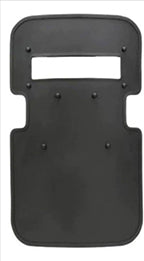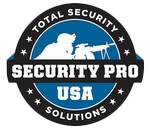
This shield is designed to protect you from high-powered rounds, and it's perfect for those who need the most protection possible.
General Information: There are 1756 words in the article. It has a readability score of 12.58 for reading grade level of 13 Article Content: Are you looking for the highest level of ballistic protection for your home or business? Look no further - the latest in ballistic shielding technology is here! In this blog post, we'll walk you through the features of Level III ballistic shields and why they're the perfect choice for advanced security. Keep reading to find out how this cutting-edge technology can help protect your property!
Understanding Ballistic Shield Benefits of Ballistic Shield Level III
ballistic shield level iii offers enhanced protection against gunshots and other projectiles. Not only is the level III design better at stopping rounds, but it's also more affordable than other types of ballistic shielding. As a result, businesses and individuals can protect themselves from potentially deadly threats with ease.
Some of the benefits of using a ballistic shield level III include increased safety for those inside
Level III
-
Level III: This is by far the most protective type of barrier; however, it can be expensive to install and maintain.
-
Multi-Layer Barrier Systems (MLBS): These shields combine features from different levels into one cohesive unit that offers varying degrees of effectiveness against various types ammunition firewalls kinetic energy penetrators shrapnel

-
When you're looking for ballistic shield level III protection, there are a few things to keep in mind. First and foremost, the level of protection should fit your needs and budget. There are many options available, so it's important to determine what type of shooting you plan on doing and what kind of risk you're willing to take.
Another thing to consider is the size and shape of your firearm. Not all firearms can be used with all types of shields, so it's important to consult with the manufacturer or retailer before making a purchase. Shield levels come in different sizes and shapes - some are designed specifically for handguns while others can protect larger weapons like rifles. Once you've determined what type of weapon you have
and which shield level best suits your needs, it's time to look at other factors like bulletproofing vs armor piercing rounds.
There are three main types of ballistic shielding: Level I (nylon cover), Level II (polyethylene cover), and Level III (heavy-duty Kevlar).
Level I shields use thin nylon covers that offer limited protection from handgun bullets but can block rifle shots. They're typically not radiation resistant or chemical resistant, so they won't stand up well to extended use in high-risk environments such as Iraq or Afghanistan.
Level II shields feature thicker polyethylene covers that stop more rounds but may be less
effective against handgun bullets than Level III shields. They may also be less resistant to chemicals or radiation exposure than Level III shields, although this varies depending on the model.
S are made from incredibly strong Kevlar material that offers full body coverage against most pistol/rifle rounds as well as shrapnel particulate matter generated by explosions or collisions at high speeds. They're often considered the best option for maximum protection from hazardous situations like combat zones or disaster relief sites where there is a heightened risk of injury or death from gunfire or explosive devices
The Different Types of Ballistic Shield Level III
When looking for a ballistic shield level III, it is important to consider the benefits it offers. These benefits include increased protection from projectiles, as well as improved safety.
One of the most important features of a ballistic shield level III is its ability to stop projectiles. This is due to the increased thickness and density of the shield. Additionally, the shield's steel construction helps to dissipate energy from impacts.
In addition to stopping projectiles, a ballistic shield level III can also protect users from other dangers. For example, a level III shield can protect against blunt force trauma. Additionally, a level III shield can help to protect users from heat and flames.
When choosing a ballistic shield level III, it is important to consider the type of protection that you need. Some of the different types of protection that a level III shield can provide include:
-
● Protection from projectiles
-
● Protection from blunt force trauma
-
● Protection from heat and flames
What to Look for When Buying a Ballistic Shield Level III
Understanding the Threat Level
When it comes to buying a ballistic shield, you'll want to make sure that you select the right level. Level III shields are designed to protect against high-velocity bullets and shrapnel. A Level III shield will stop not all bullets or fragments; therefore, ensure that your prior threat assessment determines the best option for you. Also, be aware that this type of shielding is rather bulky and may impede your mobility if worn in large numbers.
Evaluating the Quality of the Shield
The military has used ballistic Shielding to protect troops from incoming gunfire. Ballistic shields have different levels of protection, with Level III being the most protective.
When purchasing a ballistic shield, it is important to understand the level of protection offered and make sure the shield meets your specific needs. There are several factors to consider when evaluating a ballistic shield, including:
-
● The type of ammunition that will be used against the shield (bullet size and velocity))
-
● The TYPE of target or targets being protected (armored vehicle, person etc.))
-
● The size and dimensions of the area being protected
Features to Consider When Buying a Level III Shield
When it comes to ballistic shielding, there are three levels available to consumers: Level I, Level II, and Level III. Each level offers more protection from projectiles, but comes with a higher price tag.
To choose the right level of ballistic shielding for your needs, it's important to evaluate the quality of the shield and the features that are available. Here are some things to look for when buying a ballistic shield level III:
-
● Type of construction: A good Level III shield is made from heavy-duty metal plates that are welded together. This type of construction is more durable than a shield made from flexible materials, and it will not tear or collapse under pressure.
-
● Protection from small-arms fire: A good Level III shield is designed to protect against small-arms fire from handguns and other low-powered firearms.
-
● Protection from large caliber firearms: A good Level III shield is also capable of protecting against rounds fired from large caliber firearms, such as rifles and shotguns.
-
● Padding: Some shields come with padding on the inside to add additional protection. If
you plan to use the shield outdoors, make sure it has sufficient padding to withstand weather conditions.
Tips for Safe and Effective Use of a Ballistic Shield Level III
When it comes to ballistic protection, few things are as important as level III. This is thehighest form of bulletproofing that
you can still carry without the need for a special harness or wheels and is designed to stop standard rifle rounds. While all levels of ballistic shielding offer some degree of protection, only a level III shield can completely protect you from rifle fire.
Make sure the shield you purchase provides adequate coverage for your entire body. Shields that are too small or lack reach can leave you vulnerable to shotgun blasts or other high- velocity projectiles. Level III shields also come with built-in neck and head protection, so be sure to choose one that fits your specific needs. Finally, always use caution when using a ballistic shield; misuse can lead to serious injury or death.
Common Uses for Ballistic Shield Level III
If you're looking for the latest and greatest in ballistic shielding, look no further than level III. This shield is designed to provide maximum protection against gunfire. In addition, level III shields are easy to clean and maintain.
Maintenance and Care Tips for Ballistic Shield Level III
To ensure your ballistic shield level III remains effective and safe, follow these simple tips:
-
● Always keep your shield clean and free of debris.
-
● Wipe down the shield with a dry cloth if it becomes dirty.
-
● Store your shield in a cool, dry place.
The use of ballistic shields has become increasingly important in recent years, and Level III shields are the highest level of protection available. With their superior protection and wide range of uses, Level III ballistic shields are an invaluable asset for anyone looking to stay safe in dangerous situations. By understanding the different types, benefits, and features of Level III ballistic shields, you can make an informed decision when it comes to choosing the right shield for your needs.
By SecurityPro USA Staff writer


0 comments